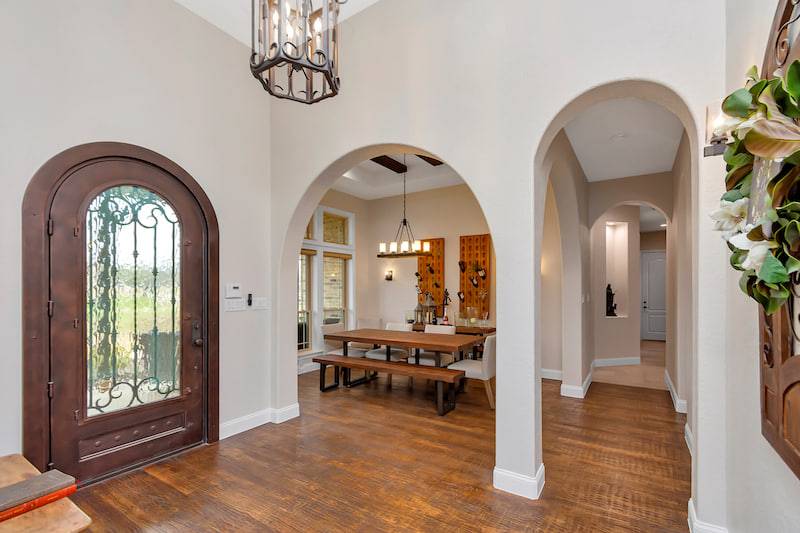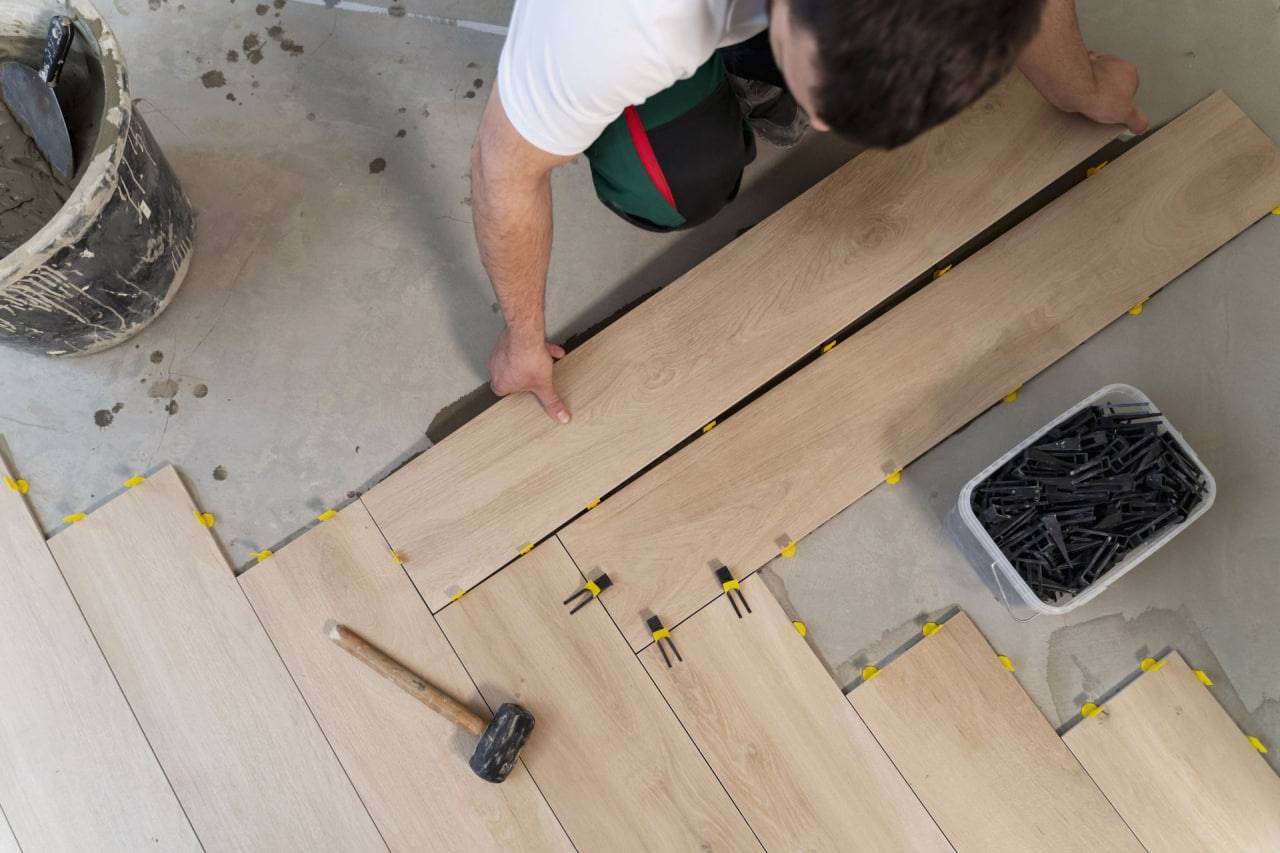Selecting the perfect flooring for your home goes beyond aesthetics. It sets the tone and functionality of your space, impacting both first impressions and daily life. Since flooring is a long-term commitment, choosing wisely is crucial.
This guide will help you navigate your options and find the ideal flooring that suits your needs and style.
Space
- Opening: Instead of starting with “The first thing to consider,” consider a more engaging opening like: “When choosing flooring, the size and shape of the room are crucial factors.”
- Clarity: Replace “laid” with “installed” for better clarity. Additionally, consider explaining the impact of light and how flooring can create the same effect as walls and paint. You could rephrase as: “Light-colored flooring, like lighter walls and paint, can visually expand a small room. Conversely, darker shades can add warmth.”
- Actionable advice: Instead of just mentioning getting samples, emphasize the importance of placing them in the actual room with furniture: “To truly understand how flooring interacts with your space, visit your local flooring supplier and request samples. Lay them down in the room, considering furniture placement and how the color changes throughout the day.”
Finding the Right Style
While browsing showrooms or online, it’s easy to fall in love with a specific flooring style. However, remember that your choice should complement your existing decor.
Selecting the style is ultimately personal, but ensuring harmony with your existing furniture and overall aesthetic is crucial. Failing to do so might lead to additional furniture changes, so consider the bigger picture.
Practicality Matters:
Beyond aesthetics, consider how the flooring will function in daily life:
- Foot traffic: Will the room experience high traffic, like a hallway, or be used less frequently, like a spare room?
- Activities: What activities occur in the room? Kitchens need durable and easily cleaned flooring to handle spills and stains. Bathrooms require moisture-resistant flooring to withstand constant humidity.
Flooring Types
With a good understanding of space, style, and practicality, we can delve into the exciting world of flooring types:
- Tiles: This versatile option comes in various materials like ceramic, porcelain, and stone. They offer durability, ease of cleaning, and water resistance, making them ideal for kitchens, bathrooms, and high-traffic areas.
- Vinyl: Known for its affordability and water resistance, vinyl is available in various styles that mimic wood, tile, and stone. It’s a good choice for budget-conscious homeowners and areas prone to spills.
- Wood: Offering timeless beauty and warmth, wood flooring adds value to your home. However, it requires more maintenance and can be susceptible to moisture damage. Choose from solid wood, engineered wood, or wood-look laminates based on your budget and desired look.
- Carpet: Soft and comfortable underfoot, carpet provides excellent sound insulation. However, it can be challenging to clean and may trap allergens, making it less suitable for allergy sufferers or high-traffic areas.
Remember, your personal preferences play a significant role within each type. Do you prefer the classic elegance of solid wood planks, the practicality of vinyl tiles, or the cozy comfort of plush carpet?
Sub-types and shapes add another layer of choice. Explore options like rectangular tiles, hexagon mosaics, herringbone patterns, and various wood plank widths.
Budgeting for Your Dream Floor
Let’s face it, flooring comes in various price points, ranging from budget-friendly to luxury options. Determining your budget is crucial, and sticking to it is even more important.
Before heading to showrooms or browsing online, establish a realistic spending limit and factor in installation costs along with the material itself. Remember, enticing marketing and persuasive sales staff aim to sway your decision, but stay committed to your budget and choose a flooring solution that aligns with your financial comfort zone.
Professional Touch or DIY Challenge?
Considering installation:
- DIY (Do It Yourself): This option can save money but is not suitable for everyone.
- Pros:
- Cost-effective (if successful).
- Sense of accomplishment.
- Cons:
- Requires skill and experience.
- Risk of mistakes can be costly.
- Time investment.
Suitable DIY flooring options:
- Engineered wood: Easier to click-lock than solid wood.
- Laminate: Similar to engineered wood in terms of installation ease.
Before attempting DIY:
- Calculate the total cost: Factor in tools, materials, and your time.
- Consider potential difficulties: Mistakes can be expensive and time-consuming to fix.
Professional installation:
- Benefits:
- Ensures proper installation and avoids costly mistakes.
- Saves time and effort.
Finding a professional:
- Research local firms online.
- Compare quotes and experience levels.
- Seek recommendations (if offered).
No matter your choice, careful planning and research are crucial.
Maintenance
Now that your dream floor is installed, maintenance becomes crucial for its longevity and beauty. Consider your commitment to upkeep before making your final choice.
Low-Maintenance Options:
- Resilient Flooring: These include sheet vinyl, vinyl tiles, and laminate flooring. They require minimal effort, just regular mopping and prompt spill cleaning.
High-Maintenance Options:
- Wood Flooring: Despite some claims, wood flooring demands more attention. It requires regular cleaning, occasional refinishing, and potentially specialized cleaning products. While undeniably stunning, wood floors come with a higher upkeep commitment.
Finding the Balance:
Consider your lifestyle and priorities. If you prefer a hands-off approach, resilient options might be ideal. If you value the warmth and beauty of wood and are willing to invest time and effort in its care, then wood could be a great choice.
Remember, maintenance goes beyond just cleaning. Some flooring types are more prone to scratches, dents, or fading than others. Choose a material that aligns with your daily activities and wear and tear expectations.
By understanding the maintenance requirements of different flooring types, you can make an informed decision that ensures your chosen floor not only looks beautiful but also lasts for years to come.
Conclusion
Choosing the perfect flooring is an investment in your home’s beauty and functionality. By considering your space, style, practicality, budget, installation options, and maintenance preferences, you can make an informed decision that reflects your personal taste and ensures lasting satisfaction.
Remember, flooring is a long-term commitment, so take your time, explore your options, and don’t hesitate to seek professional advice if needed. With careful planning and these helpful tips, you’ll find the ideal flooring that complements your home and lifestyle for years to come.
FAQs
Q: How long does new flooring typically last?
A: The lifespan of flooring depends on various factors like material, maintenance, and usage. However, on average, well-maintained flooring can last anywhere from 10 to 50 years or more.
Q: What are some eco-friendly flooring options?
A: Many sustainable options are available, including cork, bamboo, recycled wood flooring, and linoleum. These materials often come from renewable resources and have minimal environmental impact.
Q: Can I mix and match different flooring types within my home?
A: Absolutely! Mixing and matching flooring types can add visual interest and define different areas within your home. Ensure smooth transitions between materials and choose complementary styles and colors for a cohesive look.
Q: Should I get professional help with choosing and installing flooring?
A: While DIY is an option for some, seeking professional advice can be beneficial, especially for complex installations or if you’re unsure about the process. Professionals can guide your choices, ensure proper installation, and save you time and potential headaches.



